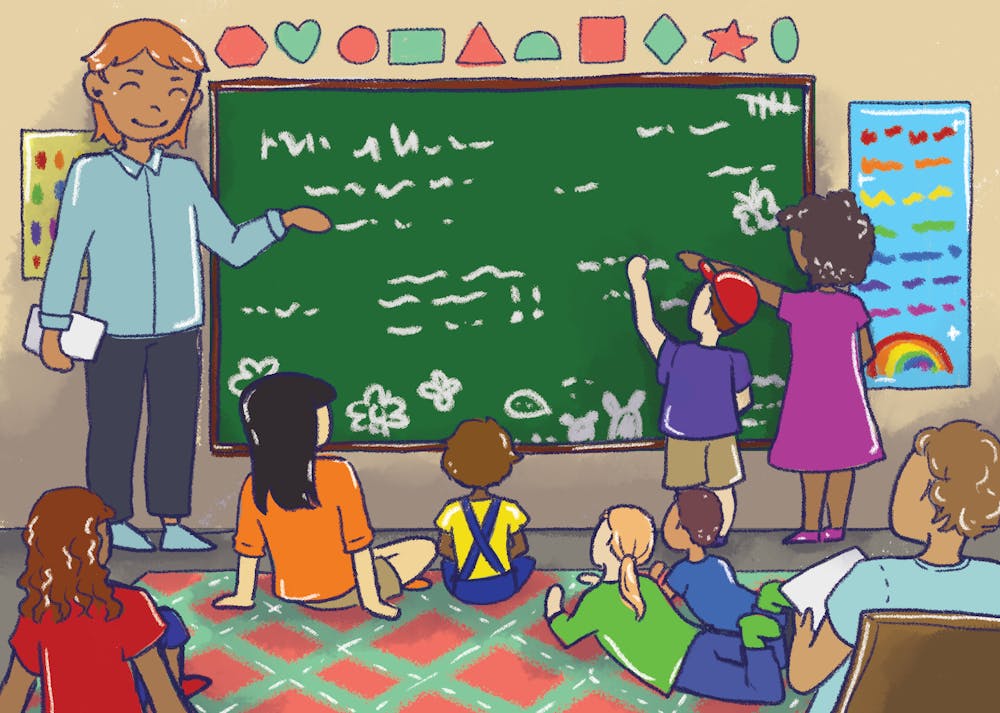ASU will continue its pursuit of improving Arizona's education with its Helios Decision Center for Educational Excellence with a new grant and partnership extension.
In June, the University and the Helios Education Foundation, a Phoenix-based nonprofit, announced a $6.5 million grant and an extension of their collaboration to further the work of the center, which analyzes data from students' educational paths — from pre-K through employment.
The center creates models and reports from the data and provides schools feedback on their current performance and gives them tools to increase student success, said Joe O’Reilly, director of the Decision Center for Educational Excellence.
The collaboration also supports the state's education goal: to have 60% of Arizonans with a degree or certificate by 2030, said Paul J. Luna, CEO of Helios Education Foundation.
Currently, Arizona ranks 46th in the nation in education, according to a U.S. News and World Report ranking that looked at both higher education and pre-K-12 performance.
“Overall, we want to make sure that we're providing decision makers in school districts, in cities across the state, the tools and the information they need to accurately, equitably serve all our students and improve educational outcomes for all of our students,” said Luke Tate, managing director of the Office of Applied Innovation.
When creating educational models for schools across Arizona, the Decision Center looks at a wide variety of key variables including absence rates, poverty levels, access to preschools and ease of college applications, O’Reilly said.
With the data, the Decision Center will use its findings to collaborate with schools and partners throughout the state, such as the Arizona Department of Education, work that has been underway since the initial $2.5 million grant in 2018.
“It's data, plus ASU, plus stakeholders, equals better student outcomes,” O’Reilly said.
Over the past three years, the Decision Center has focused on arranging data sharing agreements and gathering the raw numbers used for their work, as it was not all publicly available, O’Reilly said.
“We were making progress and getting more and more groups to say, ‘Hey, we'll share our data with you because you're doing something that will have important answers for questions we have,’” O’Reilly said.
Amid the COVID-19 pandemic, it was difficult to meet with educators and stakeholders from communities across the state, so as the Decision Center moves into the extended collaboration, it will be focusing on applying the data obtained so far, O’Reilly said.
The first simulation the Decision Center developed shows the graduation rate and college attendance rate for each public high school in the state, Luna said. The data allows each individual school to find out what is working about their community and isolate the areas of improvement for the students.
“When we bring this data, we think it's going to help us eliminate education achievement gaps across the continuum for all students and improve the student outcomes and ultimately, achieve that attainment goal that we have as a state priority,” Luna said.
One upcoming focus of the Decision Center is combatting the idea that not all students can go to college, Tate said.
According to an Arizona Board of Regents report, only 52% of 2018 high school graduates in the state enrolled in postsecondary education within a year of graduating, compared with 69% of graduates nationally.
“That sentence, ‘college isn't for me,’ can invade the most talented students’ minds,” Tate said.
To show students that higher education is attainable, the Decision Center will be letting students know that they are on track to attend an in-state university before they graduate from high school, or before they apply to college, based on the automatic admissions requirements for in-state schools, Tate said.
To serve the communities across the state, Arizonans have to approach education as the heart of all social, economic and health issues, O’Reilly said.
“If we can make sure that every student that maximizes their abilities and takes advantage of their abilities and gets the opportunities to do that, we are going to have a much more prosperous state,” O’Reilly said. “People are going to have a better quality of life, and Arizona will thrive.”
Reach the reporter at alcamp12@asu.edu and follow @Anna_Lee_Camp on Twitter.
Like The State Press on Facebook and follow @statepress on Twitter.
Continue supporting student journalism and donate to The State Press today.




